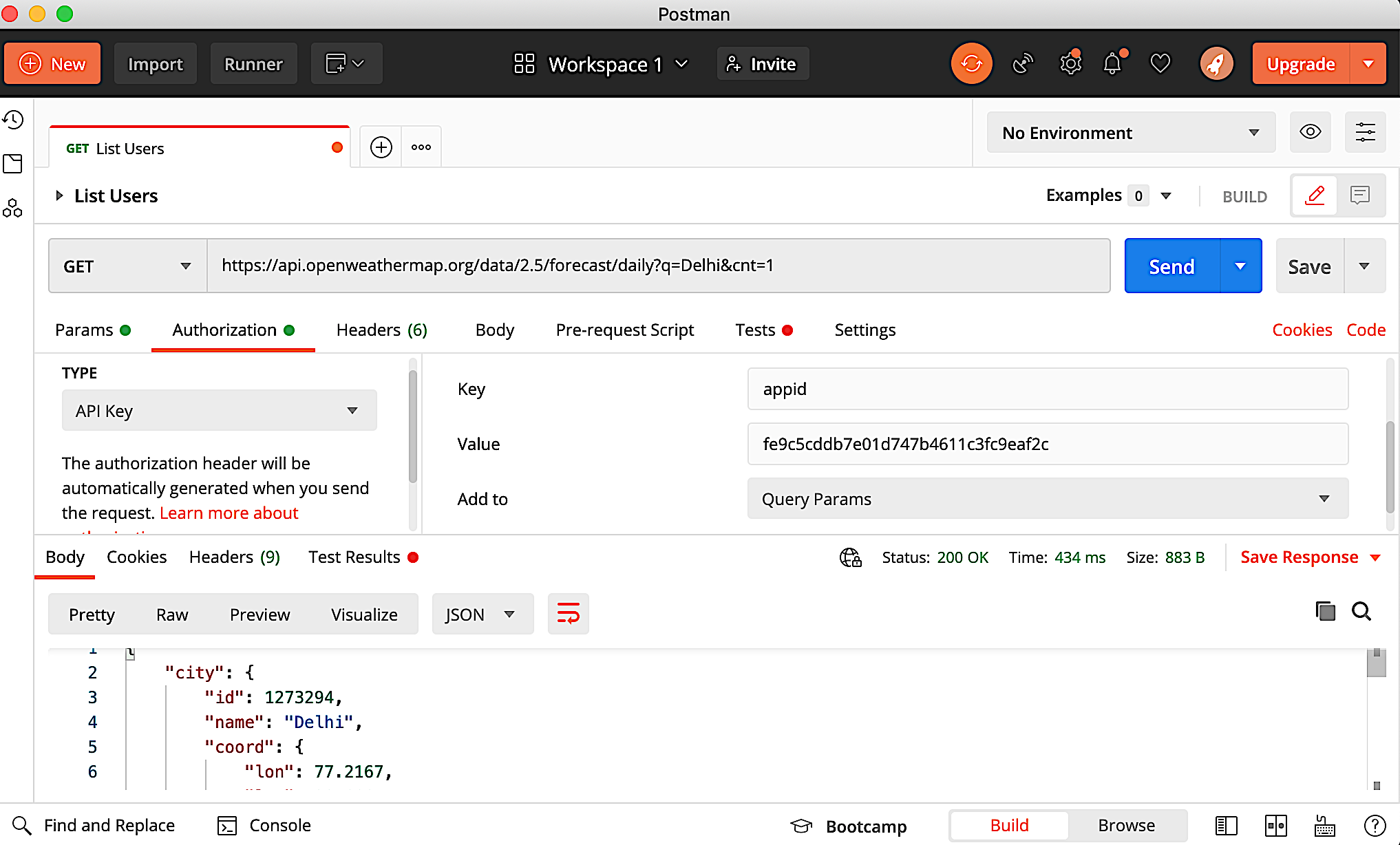

- #API LOAD TESTING POSTMAN HOW TO#
- #API LOAD TESTING POSTMAN INSTALL#
- #API LOAD TESTING POSTMAN UPDATE#
- #API LOAD TESTING POSTMAN CODE#
- #API LOAD TESTING POSTMAN DOWNLOAD#
The environment variables in Postman can be used in the URLs, in the POST parameters, in the JavaScript code, etc.
#API LOAD TESTING POSTMAN UPDATE#
If you need to update a variable value, you can do it in one place and the value will be automatically changed throughout your request collections. The variables allow developers to store and reuse parameter values in API requests and scripts. Postman VariablesĮnvironment variables can be defined by clicking on the eye icon in the upper-right corner of the Postman window (see the Postman learning center website for details). To learn more about setting up monitoring devices, see our Postman Monitoring (Collection Tasks) with Dotcom-Monitor APIs article.
#API LOAD TESTING POSTMAN HOW TO#
To learn how to set up an API load test using Postman Collections in our load testing solution, LoadView, read our Web API Load Testing with Postman Collection. If you use Postman to test your API services, and you want to automate your tests and continuous monitoring, the Dotcom-Monitor platform provides you with comprehensive solutions and tools to create and run API load tests and monitoring task using Postman Collections. In this article we will discuss a way to define and use Postman environment variables in Dotcom-Monitor tests. Postman is one of the most popular API testing tools that allows web developers to create collections of calls with input data to an API and check the accuracy of the output data. Want to see it for yourself? Check out this video walking through how to run and test collections from the command line with Newman.Proactive API performance testing and monitoring are vitally important within web application development.
#API LOAD TESTING POSTMAN CODE#
The command is a Newman script that runs your collection with the tests, returning a pass or fail exit code that’s logged in your CI system. You will set up your CI configuration to run a shell command upon kicking off your build. If you want to use Newman programmatically, i ntegrating your Postman tests with your favorite continuous integration service is the same process with Jenkins, Travis CI, or any other code deployment pipeline tool. Now, say you have a full-fledged Continuous Integration and Continuous Delivery (or CI/CD) pipeline, and you want to run these Postman tests every time you kick off the build process. $ newman run Best: integrate with your CI/CD pipeline Copy and paste this entire URL to run in the terminal.

Update the URL by adding the apikey query string parameter along with the value of your own Postman API key. Copy and paste this value into the GET Single Collection endpoint. Identify your collection’s collection_uid. Use the Postman API to send a request to the GET All Collections endpoint. You’ll need your Postman API key for this next step. You can do the same to retrieve the latest version of an environment, if you’re using one. Instead of manually exporting another collection file every time someone makes an update, use the Postman API to retrieve the latest version of the collection to save time and be rest assured that you’re working off the correct version. What happens if the collection changes? You might be collaborating in a team workspace with other team members making updates to the collection. Better: run Newman with the latest collection URL For any Postman test that fails indicating the API response is not what you expected, you can then file a bug in your issue tracking platform. Newman supports a variety of output formats, including a human-friendly console output, as well as outputting to a JSON or HTML file. In the same directory where the JSON file is saved, use Newman to run the collection from the command line.
#API LOAD TESTING POSTMAN DOWNLOAD#
Similarly, you can download a JSON file of an environment if you’re using one. In the Postman app, click on the ellipses ( …) next to the collection and select “Export” to download a JSON file of the collection. If you don’t have a regular CI/CD process, and just want to run a collection, then this is the option for you. This option is great to run and test a Postman collection in an ad hoc manner.
#API LOAD TESTING POSTMAN INSTALL#
Once you install the dependencies, and get started with Newman, here are some good, better, and best practices to use Newman. Find the best option that works for you, and let Postman free up a little more of your time to spend on something else. The Newman CLI can help you run and test your collection ONCE or EVERY time you make changes. Maybe you’re a DevOps engineer who wants to integrate Postman tests with your CI/CD build process. Maybe you’re a QA engineer who wants to occasionally run your Postman tests from the command line.


 0 kommentar(er)
0 kommentar(er)
